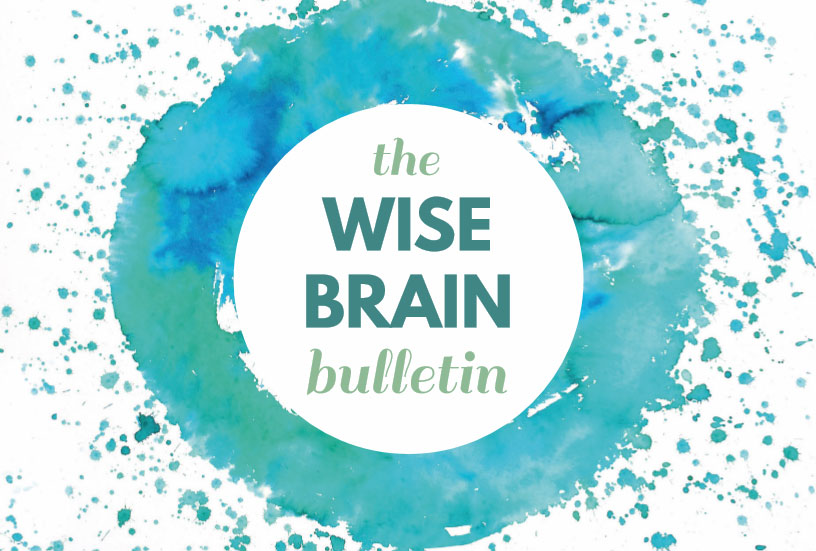News and Tools for Happiness, Love, and Wisdom
Volume 18,4• August 2024
In This Issue
Facing The Storm: Working with the Difficult Emotions of Burnout
© 2024 Kristin Neff, PhD and Chris Germer, PhD
Burnout involves a boatload of difficult emotions. First there are the feelings of stress, frustration, and exhaustion that drive burnout. Then there are the emotional companions of burnout: hopelessness, cynicism, dejection, grief, anger, resentment, anxiety. Finally, there are the ways we feel about ourselves for being burned out—shame, blame, and disappointment. We can easily be overwhelmed by all these painful emotions.

Burnout is a kind of coping mechanism that we unconsciously adopt to deal with our chronic distress. We shut down, go numb, develop brain fog, and become detached, because remaining open and vulnerable to our pain feels unbearable. Of course, no one chooses burnout as an intentional coping strategy, but the mind and body close as naturally as an armadillo that rolls up into its shell when attacked by a dog. Burnout can be seen as a method of self-preservation. When we can’t get out of bed, we aren’t working so hard. When we’re numb, we don’t hurt as much. When we can’t think straight, we don’t have to constantly focus on our problems. When we’re cynical, our hopes can’t be dashed so easily. When we believe we’re utter failures, we can’t sink any lower.
Klara is a psychiatrist in a large clinic who worked to get her medical degree and psychiatry specialization because she wanted to help people. But she has so many patients that she can spend only a few minutes with each one, and she devotes most of her time to paperwork. Even when Klara is with a patient, she’s mainly entering information into her notes. She went into the profession to do hands-on work that could make a real difference to people with mental illness, but her main clients these days seem to be the insurance companies.
At first this deeply troubled Klara, but lately she doesn’t feel much of anything. She goes through the motions of her job like an automaton, even though she tries to smile and hide her apathy. There’s something slightly protective about being in that detached state. It numbs the pain of watching her dream of helping people evaporate. Klara worries about how cynical she’s become, however. She finds herself using belittling nicknames for her patients, like “endless talker,” “drama queen,” and “walking dead.” She’s starting to question her empathy skills and her decision to specialize in psychiatry. Blaming herself is also a distraction from feeling she has no power over the broken mental health care system at the root of it all. Although Klara is shielding herself by shutting down, she’s also shutting out the possibility of improving her work or her life.

Dealing with emotional pain by numbing it, distracting ourselves, or becoming resigned cynics is only a temporary fix. We can’t avoid pain forever. What we resist persists and grows stronger. But being at the end of our rope in a state of burnout can also be a gift, because it highlights the fact that we’ve run out of escape routes. The only way out is through. Eventually we need to turn toward our pain and look it straight in the face. To do this we need to wrap ourselves in the protective cloak of self-compassion, which helps us make this turn slowly and safely.
Approaching difficult emotions with a strong back and soft front
Often our reactions to the imperfection of life, including chronic work stress and our limited capacity as humans to deal with it, are driven by fear. Joan Halifax, a Buddhist meditation teacher and writer, says that when fear is powering our reactions, we typically adopt a hard front (the critical cynic) to hide a weak back (lack of confidence that we can survive). She proposes that we turn this around when things get difficult, aiming instead to cultivate a strong back but a soft front. Having a strong back means we’re courageous and firm but also flexible (trees that fail to bend with the wind snap, and so do humans). This strength provides the safety needed to open to our pain rather than defend ourselves from it. Having a soft front means we use compassion to comfort and care for ourselves because we hurt.
Facing chronic stress with compassion allows us to stand our ground as the winds swirl around us while keeping our hearts open. An incredible example of someone with a soft front and strong back was Rosa Parks, a Black woman living in the 1950s in racially segregated Montgomery, Alabama. She was asked to give up her seat in the “colored” section of the bus to a White passenger because the “White” section was filled. Politely and respectfully, she refused. She was tired of her people being mistreated, so she sat with her head held high and didn’t budge. Her profound act of courage and compassion helped to spark the civil rights movement and end legal segregation in the United States.
We can adopt a similar stance toward the unrelenting emotional assault of our work lives. Instead of letting it eject us from our seat, we can decide not to budge and to face it head on. If we can hold ourselves with strength and love as we let ourselves feel what we’re feeling, we don’t become so overwhelmed. It’s not dissimilar to holding a tantrumming two-year-old with firmness and tenderness at the same time, letting them know we love them and that they have our support as they cry it out. Eventually the child will start to calm down. We can use the same approach to the emotions related to burnout.
But Klara hadn’t learned about self-compassion yet, unfortunately, and her back wasn’t strong. One day she walked into her office and found papers all over the floor next to her desk. Apparently, the pile of patient files had gotten precariously high and toppled over, with loose papers cascading to the ground. She went limp and considered dumping them all in the wastebasket. What did it matter anyway?

Then she glanced at a paper in her hand and recognized the name of a brave transgender teen who struggled with depression after being bullied and rejected at school, who just wanted to be accepted for who he was. He mattered. A crack appeared in Klara’s armor. The pain and frustration and anger and feelings of despair started to pour in, and they kept coming until finally she collapsed on the floor alongside the papers. She was knocked flat. The doors of Klara’s heart opened too suddenly, and she didn’t have a solid self- compassion practice to stand on, so she was swept away by the flood of her repressed feelings.
Taking it gradually
Difficult emotions can be overwhelming if we open to them too quickly. It’s important to take it gradually, making sure we have the strength and resources needed to cope moment by moment. We have a saying in the self-compassion world: “Walk slowly, go farther.” In other words, we set our intention to open to our pain and let go of resistance, but do it little by little, so that we can build up strength along the way. The process of letting go of resistance to our emotions typically goes through five stages, known as the stages of acceptance.
The Five Stages of Acceptance
- Resisting: This is where most of us start. We desperately want the painful emotions to go away, so we either pretend they aren’t there or fight against them. Unfortunately, neither strategy works.
- Exploring: We peep through the keyhole to see who’s there. Turning toward our difficult emotions with curiosity, we ask, “What am I feeling?” We do this more cognitively than emotionally, however.
- Tolerating: Once some stability has been established, we tolerate the reality of our painful emotions. We feel them but still wish they would go away.
- Allowing: At the next step we give up our resistance and allow the painful feelings in. We fully accept our emotional experience as it is.
- Befriending: Finally, we start to see value in our difficult emotions, realizing that they often have an important gift of growth or learning for us.
When dealing with chronic stress, our usual way of relating to it is with resistance. We ignore it or are taken over by it, fueling burnout. The first step toward acceptance is simply to identify what you’re feeling. You recognize that you’re stressed. The next step involves feeling the stress in your body, perhaps as tension in your neck and shoulders. Tolerating means you’re making more direct contact with the feeling, even though you still want the stress to go away. In the phase of allowing, you give up the agenda for the stress to go away. You accept that you’re stressed and make space for it in your awareness. Finally, you start to realize that the feeling of stress is giving you an important message. Instead of resenting feeling stressed, you’re grateful that it’s pointing out that you’re overworked and need to slow down. Once we befriend our difficult emotions, they’re no longer so difficult. By changing our relationship to our pain, we help ourselves suffer less.
Feeling grateful for difficult emotions can be a tall order, however, which is why it’s important to go slowly and only at a pace that feels safe. You can always back off for a little while if needed. For instance, becoming overloaded with adrenaline after trying to tolerate the feelings of stress in your body would be a clear sign to disengage and go back to simply mentally noticing that the stress is there. You want to move forward only once that feels safe (perhaps after taking a walk or talking to a friend). Working with difficult emotions requires self-compassion.
Strategies for opening to difficult emotions related to burnout

Difficult emotions are temporary. Left to their own devices, they arise, are felt for a while, then pass on. When we resist our feelings, however, we lock them into place so they can’t naturally fade away. That’s why it’s so important to try to let go of resistance when it feels safe to do so. To let go of resistance to challenging feelings and work toward accepting them, consider the following three techniques rooted in mindfulness and compassion.
Labeling emotions: You can explore a difficult emotion that arises by giving it a name or label (fear, disappointment, stress, shame, and so forth). Gently repeat the name for the feeling when it comes up, noting what’s there in an objective manner. When you name an emotion, you stop avoiding it, but you also keep yourself from getting lost in it. In effect, when you name what you’re feeling you get some distance from it and are no longer caught by it. Labeling practice is an effective mindfulness tool for working with difficult emotions, and research has shown that using this strategy weakens the brain’s tendency to become reactive and lessens activity in the amygdala.
Feeling emotions in the body: A useful mindfulness technique that can help you tolerate difficult emotions is to feel the emotion as a physical sensation in your body. All emotions have a mental and physical component. The emotion of fear, for example, may be driven by the thought “I’m way behind and I’ll lose my job,” but also express itself physically as churning in the stomach. We’re such thought-based creatures that we tend to focus mainly on what’s happening, why it shouldn’t be happening, and who’s to blame for it. Focusing instead on the physical experience of our emotions helps us disentangle from our thoughts, where our resistance lies.
Soften–soothe–allow: A compassion-based process we call soften–soothe–allow can help you learn to make space for difficult emotions and even befriend them. While experiencing an emotion as a physical sensation, you orient toward it with softness and tenderness, relaxing the constriction in the body. You then soothe, comfort, and support yourself because you’re hurting and in emotional pain. Finally, with the strength and safety offered by your own care, you simply allow your experience to be as it is. Because resistance increases suffering, letting go of resistance is an act of self-compassion.
You can use the two mindfulness techniques of labeling difficult emotions and feeling them in your body as stand-alone practices. Adding compassion to the mix is especially powerful, however. A really good time to use the following tool, which combines all three approaches, is when you’re in bed at night and your mind is racing with distressing thoughts and feelings.
SELF-COMPASSION TOOL: Being with Difficult Emotions Related to Burnout

Become aware of a situation related to your experience of burnout that’s generating difficult emotions—having too much work to do, getting too little sleep, dealing with a broken administrative system, and so on. Play out the situation in your mind’s eye—what’s happening and who is involved, if anyone.
Label any difficult emotions that are arising, such as stress, disappointment, grief, fear, hopelessness, shame, inadequacy, and confusion. You may also notice and label a lack of emotion (such as numbness). See if you can identify the strongest emotion you’re experiencing and repeat the label for that emotion in a friendly way. Drop out of your head and into your body. Focusing on the emotion you’ve named, see if you can identify where you actually feel the emotion as a physical sensation. Pounding in your head, constriction in your throat, twisting in your gut, or another sensation? If you can’t identify a specific place in your body where the emotion resides, see if you can sense any physical tension or discomfort. As much as possible, let go of the storyline driving the emotion and simply feel your body.
Soften your body around the physical sensation of the emotion without trying to change it. Hold it a bit more tenderly, relaxing around the edges, allowing the tension to melt slightly.
Soothe, comfort, and support yourself because it’s hard to feel this emotion. You might place a warm hand on the place in your body where you feel the emotion or on some other comforting place. Silently speak some words of kindness and support, as you might use with a close friend: “I’m so sorry your situation is so difficult” or “I’m here for you.”
Allow your discomfort to be there. Create some space for it, letting go of any need to change it or make it go away, at least in this moment. If you like, stick with the emotion as a physical sensation, repeating “soften–soothe–allow.”

You might find that other emotions arise or the location of the emotion shifts. Simply allow the emotions to do their dance, held in the safety of your own care and support.
When Klara learned this practice it made a big difference for her. She did it every night when she got into bed, asking herself what difficult emotions were triggered by her work that day. Typically they were feelings of frustration over the amount of paperwork she had. She would name the frustration and drop into her body to feel the tension in her chest. Then she would soften around the edges of the frustration. It was almost like she was perforating the edges of it so it wasn’t so tightly bound. Then she put her hands on her chest, over her heart, and comforted herself for the pain she was experiencing. Using a warm and caring yet firm tone of voice, she would silently say things like “Of course you’re upset, Klara. You want to help these people who are struggling with their mental health, but your hands are tied by all the paperwork. Anyone would feel frustrated. You’re doing your best in difficult circumstances.” She felt her own strength and the commitment to be there for herself. This support allowed her to let go of her resistance to the frustration and simply allow it to be there as a physical sensation. She imagined that the sensation was arising in a vast warm and loving space and that she actually was this vast and loving space. How can space be harmed?
Often when Klara did additional rounds of soften–soothe–allow, she would discover other emotions lying underneath the frustration—fear, anger, despair, grief. She would resolutely stick with whatever emotions came up, not budging, holding them with space and love. Eventually she began to experience a warm, peaceful feeling, and the difficult emotions would subside somewhat. Klara came to rely on this nightly practice to process and digest the emotional pain of her work so that she was no longer overwhelmed by it.
She also realized that her frustration had an important message for her: she needed to try to do something about the broken system. She joined a group of doctors who were advocating for insurance reform. Although it was an uphill battle, at least she was reengaged with the value of helping others that had led her to enter the mental health profession in the first place.
When we use a soft front and strong back to stay with the discomfort of difficult emotions, they tend to arise, do their little dance, then move on. We don’t have to be knocked down by them. We don’t have to shut down in a zombie-like state of burnout to avoid feeling them. By changing the way we relate to difficult emotions, we can get through almost any storm and live to fight another day.

ABOUT THE AUTHOR
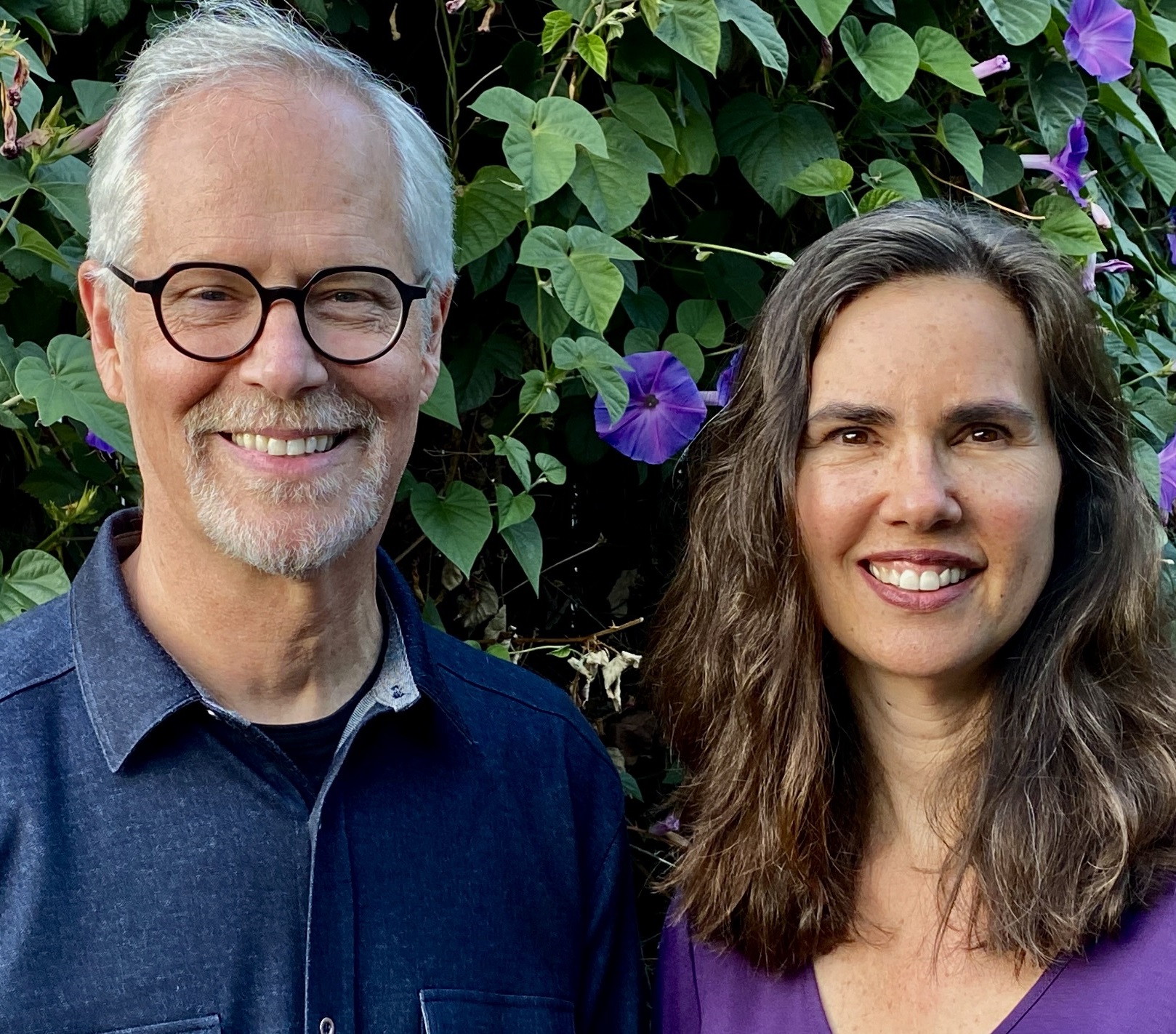 Kristin Neff, PhD, is Associate Professor of Educational Psychology at the University of Texas at Austin and a pioneer in the field of self-compassion research. She has been recognized as one of the most influential researchers in psychology worldwide. Her books with Christopher Germer include The Mindful Self-Compassion Workbook and Mindful Self-Compassion for Burnout (for the general public) and Teaching the Mindful Self-Compassion Program (for professionals). Along with Christopher Germer, Dr. Neff developed the empirically supported Mindful Self-Compassion program and founded the Center for Mindful Self-Compassion. Her website is https://self-compassion.org.
Kristin Neff, PhD, is Associate Professor of Educational Psychology at the University of Texas at Austin and a pioneer in the field of self-compassion research. She has been recognized as one of the most influential researchers in psychology worldwide. Her books with Christopher Germer include The Mindful Self-Compassion Workbook and Mindful Self-Compassion for Burnout (for the general public) and Teaching the Mindful Self-Compassion Program (for professionals). Along with Christopher Germer, Dr. Neff developed the empirically supported Mindful Self-Compassion program and founded the Center for Mindful Self-Compassion. Her website is https://self-compassion.org.
Christopher Germer, PhD, is a clinical psychologist and Lecturer on Psychiatry (part-time) at Harvard Medical School. His books with Kristin Neff include The Mindful Self-Compassion Workbook and Mindful Self-Compassion for Burnout (for the general public) and Teaching the Mindful Self-Compassion Program (for professionals). Dr. Germer is also author of The Mindful Path to Self-Compassion and coeditor of Mindfulness and Psychotherapy and Wisdom and Compassion in Psychotherapy. He lectures and leads workshops internationally, and has a small psychotherapy practice in Massachusetts. His website is https://chrisgermer.com.
Untangling: Transforming What’s Impossibly Stuck
© 2024 Barbara McGavin & Ann Weiser Cornell
Our careers, our relationships, and our happiness were on the line. Even though we were experienced workshop leaders – even though other people looked to us for help—we were each secretly facing some of the biggest, toughest, most problematic issues of our lives.
Ann was drinking too much – more and more often. Barbara sometimes felt so inadequate and worthless that she thought she’d be better off disappearing—permanently. We both felt deeply ashamed about having these problems, and we were doing our utmost to pretend they didn’t exist.
The first inkling of a breakthrough came when we confessed to each other what we were struggling with. The method we had been teaching (Focusing) had helped us in many ways, but these entrenched problems had remained untouched. We realized there and then that we needed to find a way to bring real change.
Pooling our resources, and building on what we’d each already been developing, we found ourselves creating entirely new processes. And, of course, we were trying them out first for ourselves.
They worked. Ann stopped drinking, and Barbara stopped wanting to disappear. What a relief!
These were huge changes. But something else happened that turned out to be even more important.
It turned out that we didn’t have to “fix” ourselves or “solve” our problems. When we saw our problematic issues as defects or failures, we were stuck with them. When we treated ourselves with radical empathy and self-acceptance, the problems quite literally solved themselves.
You know those problems in your life that you think are the worst, the most despicable, the biggest, most utterly insoluble? Those are the places where your greatest growth and transformation are waiting to happen.
Yes, the very place that seems to be such an intractable problem holds within itself everything needed for it to resolve. It does need you to bring a certain kind of awareness to it, but it absolutely doesn’t require you to fix or figure out or force anything to change. As a matter of fact, trying to fix or force or figure it out will only keep things stuck.
Wherever there is something that is impossible to think or feel or do in your life, you are finding the exact spot where the next step in your life is still ready, waiting to happen. It doesn’t matter how long ago it got all jammed up. The right next step of your life can still happen.

It was a Tangle
Ann struggled with alcohol, and Barbara struggled with food. Ann had writer’s block, and Barbara had suicidal depression. (And we had other issues as well.) You can find many books on depression, or on addiction to alcohol or on eating issues, or on procrastination and writer’s block, as if all of them are separate kinds of problems. But here is the insight that shifted everything for us: These are all the same kind of problem.
We call it a Tangle.
If you want to do something that you should be able to do, but it feels impossible—like Ann wanting to write—you are caught in a Tangle. Maybe you find it impossible to stop doing something—like Barbara and her struggles with food—that’s also a Tangle. Or it might be impossible to believe you have what it takes to accomplish something. Or it might seem impossible to feel safe even when there is nothing apparently threatening you.
So what is a Tangle?
A Tangle is a kind of problem that is complex in a fiendish kind of way. It is, in some fundamental way, impossible to solve. Whoa! What did we just say? That’s right. If you try to solve the Tangle from inside itself, it is impossible to solve.
Before you stop reading in disgust, we want to reassure you that Tangles can and do untangle. It might be relieving to know the reason you’re feeling stuck, the reason your problem has been so intractable, is not that you are stupid or lazy or crazy. The problem lies within the structure of the Tangle itself.
A Tangle is a type of problem that cannot be solved at the level of what it seems to be about. For example, you’d think that if the problem is about exercising, all you’d need to do is figure out a way to get yourself to the gym or out the door for a bike ride or a walk. If this is a Tangle, even if you do get to the gym every single day, it won’t solve your Tangle. (It would be nice if it would, but it won’t.)
No matter how smart or determined or disciplined you are, when you are caught up in a Tangle you are living inside an emotional and cognitive boundary that limits even what you are able to perceive. It’s like growing up on an island in the middle of an ocean with no way to get off.
Everything you think or feel or do about this Tangle is generated from within its borders. That in turn keeps you inside those borders.
When we are stuck in a Tangle, the way we define or describe the problem is actually part of the problem: We might say, “My clutter rules my life,” or “I have writer’s block.” We might say about a person, “He betrayed me.” We might say about ourselves, “If I were thinner, people would love me.” We might decide the solution is “I just have to try harder.” But in every case, those formulations don’t help one little bit. They are all generated from inside the Tangle and they actually keep us stuck.
We can’t think our way out of a Tangle. We are inside the cage of the problem because our thinking itself is part of the cage.
Let’s just say that again. We can’t conceptualize, or analyze, or problem-solve our way out—not if the problem is a Tangle. The very things that would work to solve even a complex problem—hard work, persistence, coming up with alternative solutions and trying them out—don’t work with a Tangle. Inside a Tangle, the best that all those efforts can accomplish is to keep things the same. Often they make things worse.
How we think about a Tangle, and what we think is causing it, is either not true or it is only a small, superficial part of what is really going on.
Why talk about Parts?
When we started relating to aspects of our experience as Parts, the Tangles we faced became much easier to explore. If it was a Part of Ann that wanted to drink, then Ann could relate to that part of her with compassion, be curious about it, and get to know it better. If it was a Part of Barbara that wanted to die, then she could treat that Part of her with acceptance and love, knowing she was more than that Part. Moving into relationship with Parts of ourselves was what made it possible for our Tangles to shift, release, and transform.

Some people are bothered by this talk about Parts. They say, “I want to be more whole, not more in bits.” But truthfully, being “in bits” is a common experience. You know how sometimes you are of two minds about something, how sometimes you have more than one feeling, or sometimes you do something you wish you didn’t and then tell yourself off for having done it?
The truth about you is that you are a whole person even when it feels like you are in pieces. Then why talk about Parts? Quite simply, we do it because it helps. Using Parts language and Parts concepts enables us to form relationships with troubling or puzzling aspects of our reactions, our behavior, and our feelings. And it is in having empathic relationships with these aspects of our lives that Untangling can take place.
Tangled up in Parts
In Tangles, Parts can seem like different people inside of you. They have different points of view, often seeing the world in radically different ways. They hold different beliefs about what is right or good or healthy or how you should live. They have different desires, different fears, different dreams for you. Some of them tell you what they think of you or what they think you should be doing. Some of them don’t talk much, they just do things or refuse to do things.
All of these Parts have different concerns. They are afraid of different things. They develop different strategies to deal with the situations you are in. Maybe Part of you shies away from going further with something you want to do while another Part of you is berating you for being a wimp. Perhaps you want to reveal what is deep in your heart, but Part of you draws back and in, making you smaller, more defended, less alive.

And Parts don’t just have different points of view. All of them have limited points of view. None of them can see the full picture. They cannot have a sense of the whole Tangle, let alone a sense of something bigger than the Tangle. Because Parts only have limited points of view, they can only deal with the little bit of the Tangle they are aware of. Any solutions they utilize are incomplete and inadequate.
Parts often pull you in different directions, either by openly battling or quietly undermining each other. One side may have a loud voice, and the other is silent yet has a powerful impact on your life. One Part in your Tangle may be on top for a while, and then it flips and the other one gets the upper hand. They push and pull, back and forth, round and round in their anxiety, fear, and desire… and with each fraught transfer of power, you probably feel increasingly frustrated, helpless, mired, disgusted with yourself. You may wind up feeling like a failure because no matter what you do, you can’t resolve the struggle. Being caught in a tussle between Parts in a Tangle is no fun.
Where do Parts come from?
When something difficult happens, your body has a feeling of the forward momentum of life being stopped. That, in itself, is at least uncomfortable. You also have an emotional reaction to being prevented from going forward. You might feel frustrated or bewildered or upset or sad or angry or scared about it. These emotional reactions are a natural part of your body’s response to not being able to get your life moving again in the way that would be right for you.
Your Tangle originally formed because you experienced something painfully difficult that proved impossible for you to work through. In trying to deal with it, you were confronted with a “damned if I do, damned if I don’t” dilemma. Dealing with it would have meant having to put yourself in a situation that felt life-threatening.
There are many kinds of danger you might have faced, but the danger that creates Tangles threatens your connections with the people who are essential in your life. In a Tangle those important people around you, instead of helping, were actually part of what made the situation impossible to resolve.
Ann’s father was emotionally distant and sometimes sarcastic. Compared to what many other kids suffer, that might not seem so bad. Yet Ann’s most tangled Tangles led back to all the times she reached to her father for love and approval, and over and over he turned away. It became impossible for Ann to directly seek love and approval from her father. Later in her life this affected all her close relationships with men.
In Barbara’s family expressing any kind of “negative” emotion was quickly squelched. She vividly remembers her father saying, “The McGavins don’t feel nervous.” She came to feel the only safe thing to do with all her emotions was to hide them.
Most of the people who have done Untangling with us have had painful experiences with their parents or siblings, teachers, schoolmates, people in some kind of position of power over them. When they were exuberant, they were mocked. When they shared something they had made, they were ignored. When their boundaries were disrespected, it wasn’t safe to speak up. They have been criticized, belittled, controlled, dismissed, betrayed. Some have been physically attacked. They were not safe to be themselves, freely and openly. They were not safe to express their needs for support, understanding, help or love.
When you can’t resolve the tough, confusing situation you’re facing, and the feelings about your life being blocked cannot be felt, those feelings become frozen. When feelings are frozen, they cannot shift and evolve. In that impossible situation, you could not live freely in any of the ways that would have been right for you. What should have been a straightforward, if painful, experience has now become stuck—stopped. We call this a Stoppage—and from a Stoppage, Parts develop.
So what are Parts trying to do?
Parts develop around a Stoppage to try to protect you from experiencing the unbearableness of it even as they are also trying to go beyond it. Parts are attempts to solve the problem of the Stoppage, but, as we have already said, Parts are limited, so their solutions are limited too.
When we can’t get everything we need, Parts try to get us some of what we need. When the feelings that get stirred up are too much to experience, Parts try to keep us shut down or distracted or feeling something else instead. When we can’t go forward as all of who we are, Parts are an attempt to go forward with part of who we are.

Parts come into being for three fundamental reasons: so you can get at least some of what you needed; so you don’t have to feel the full pain of what happened; and so the incomplete and not entirely adequate solutions and strategies of other Parts will not make things even worse for you.
Every time Barbara expressed how she was feeling, her father would let her know that kind of behavior was simply not acceptable. Over time, a Part of her came to believe that showing her feelings meant she was f lawed and inherently unloveable. In order to protect herself, she learned to hide her feelings by any means possible. She developed a Part that worked endlessly to present a stoical, ultra-private facade, no matter what she actually felt, to manage her feelings of being fundamentally worthless. She became so practiced at donning her mask of invisibility that when other people would look at her, it was as if Barbara had vanished.
There was another side to this as well. As Barbara grew older and moved out into the world, she started to feel the limitations of hiding who she was all the time. She wanted to be more free, more authentic and genuine, but she didn’t know how, so she would blurt out intimate details about her life to people she barely knew and then feel devastated and disgusted with herself when they recoiled from her.
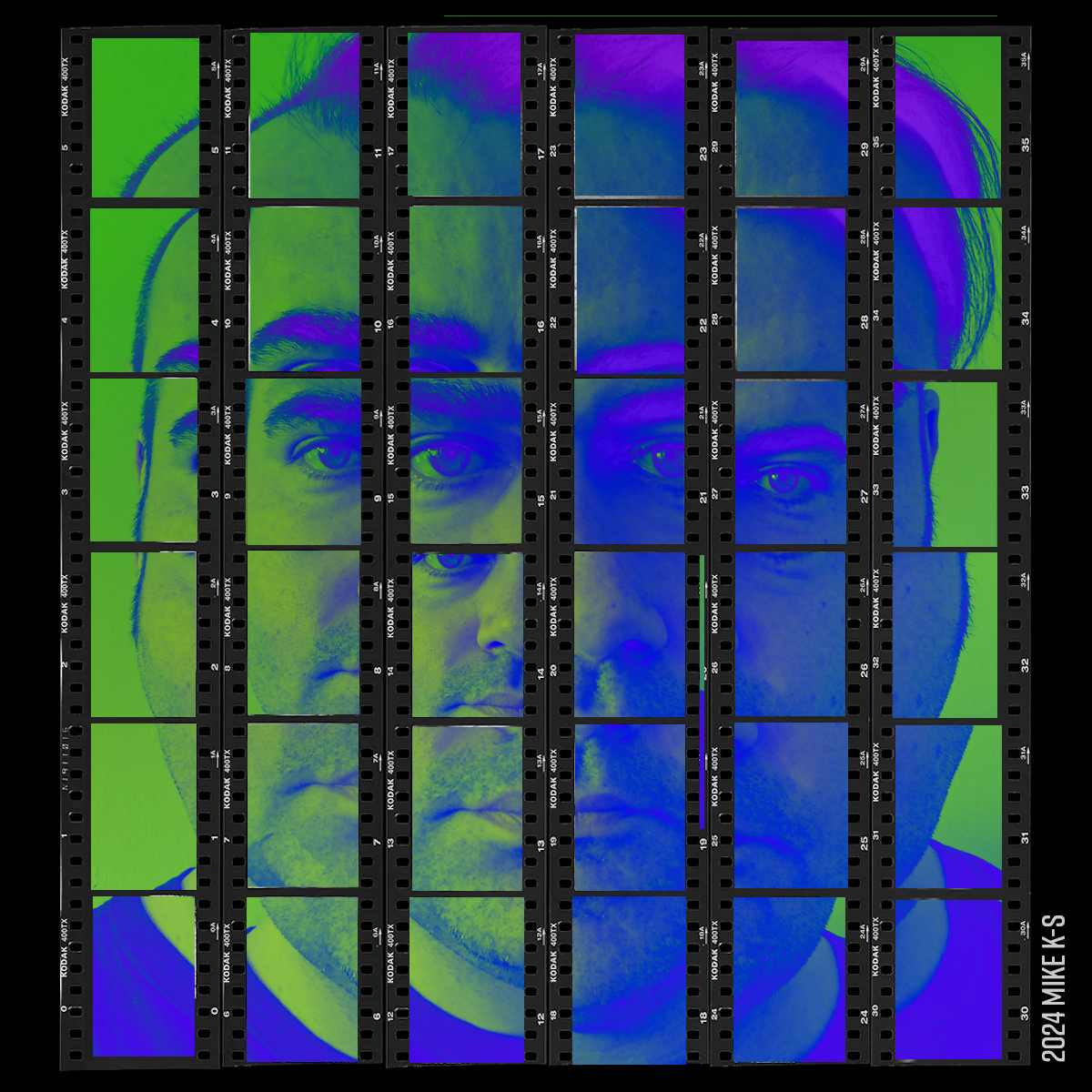
This is an example of how Parts take on tough jobs, help us survive, help us to stay safe. But because they are “partial,” they don’t have the resources of our full selves, and the solutions they come up with will always be incomplete. When those attempts fail to solve the problem, other Parts with different strategies try to fix the holes and gaps that have been created. But, of course, these further attempts to fix things are also incomplete, and the result is a tangled mess of different strategies, competing and arguing with each other.
And this is why, when we talk about Tangles, we need to talk about Parts.

How your Parts need you to be with them
When you recognize you have been identified with a Part, that gives you the opportunity to disidentify (unmerge) from it. As you disidentify from it, you can feel you are more than just that one Part of you.
When you become grounded in that larger sense of yourself, you have more options and more freedom than a Part does. You can see a wider perspective that is not limited by a Part’s point of view.
That’s what happened when Ann recognized it was a Part of her, not all of her, that wanted to drink. It’s what happened when Barbara recognized it was a Part of her, not all of her, that wanted to die.
Recognizing something in you is a Part raises the question of how you treat your Parts. There may be an intense temptation to squash troublesome Parts, cut them out, get rid of them. “If that’s what’s been causing the problem, I’ll just eliminate it and we’ll be fine.”
There are actually two huge problems with that approach. One, you are becoming identified with another Part that has an opinion about something in you and that simply doesn’t work. Two—and this is even more important than problem number one—if you managed to get rid of a Part of you, you’d be eliminating something valuable and precious from who you are.
Every one of your Parts is a custodian of essential aspects of who you are, aspects you haven’t been able to live openly and freely. To be able to live fully, you’ll need those attributes, qualities, and energy. When you are able to be with your Parts in the ways they need from you, those abilities become freely available in all areas of your life in ways that fit with your life as it now is.
Parts need now what was missing when your Tangle first formed: understanding, compassion, and empathy. In other words, they need your love.
Self-in-Presence
Early in our work we began to notice something interesting: We needed to pay attention to how we were paying attention. The quality of our attention affected whether something stuck was able to shift—or not.
Tangles are full of Parts. In order to help them shift and untangle, we needed to cultivate a way of being that wasn’t “partial.” Rather than taking sides or having an agenda, we needed to be interested and curious toward every Part. We call this way of being Self-in-Presence.
Self-in-Presence is you when you are not merged with any Part. As Self-in-Presence you turn toward and stay with what you are feeling—or, as we say, what Part of you is feeling. You recognize the Part and acknowledge it, creating a space in your inner world where it can be just the way it is. You develop a relationship with it, and you do this with each Part of you that needs your company.

Sometimes it can be challenging to turn toward a Part, such as one that is in a great deal of pain or one that is behaving in a self-destructively out-of-control way. If so, you become aware that something in you is finding it challenging, and acknowledge that Part of you as well.
As Self-in-Presence, you are the environment where every Part of you can be welcomed and related to just as it is. As Self-in-Presence, you give your Parts what they have been missing. You become the environment in which your Tangle untangles.
The Power of Cultivating Self-in-Presence
Cultivating Self-in-Presence is the most important thing you can do as you explore your Tangles. Being Self-in-Presence will protect you from being overwhelmed, it will give you clarity, and it will keep you on track. Being Self-in-Presence will make it possible for you to give your Parts the compassion, tenderness and understanding they need. It is the environment in which your Tangles can transform.

As you feel yourself being embodied, calm, curious and courageous, you are living, breathing Self-in Presence. As you create a safe environment for whatever needs your attention, you are creating a world of Self-in-Presence.
Does all that seem like a tall order? Sure, being Self-in-Presence isn’t always easy. That’s why we talk about cultivating Self-in-Presence. Being Self in-Presence at any given time is always a work in progress.
Self-in-Presence itself is not a feeling, it is a way of being present for your feelings. And your Self-in Presence isn’t something separate from and bigger than you, like God or Divine Spirit or Universal Good. Self-in-Presence is you. When you are Self in-Presence, nothing in you is bigger then you are. You are the space in which everything in you can be the way it is.
Language that supports Self-in-Presence
Language can be amazingly powerful. Language can hurt, undermine, diminish, block. Language can also heal, liberate, uplift, and support. We have crafted language that can help you shift from being merged with a Part into being Self-in-Presence and being with a Part. In Inner Relationship Focusing, we call it Presence Language .
You might have the idea that you have to feel compassionate first in order to relate as Self-in-Presence to your Parts. Actually, just using the language of Presence, whether you feel compassionate yet or not, helps you to cultivate Self-in-Presence.
Something in me…
The first important phrase of Presence Language is “something in me.” This phrase helps you to unmerge from a Part.
When you say “I am angry!” you are merged with a Part of you that is feeling angry, with all the emotions, thoughts and world view of that Part.
When you say, “Something in me is feeling angry,” you are already more than just the Part that is angry. Now you are not angry; a Part of you is. You can feel you are more than that angry Part, and, because of that, you can be present to that Part, listen to it, be empathic, and keep it company. It was not possible for you to be present for the angry Part when, for all practical purposes, you were the angry Part.
When you unmerge from a Part, you still feel that Part’s feelings. They are still there—in fact, maybe you feel them even more fully than before. You haven’t pushed them away, denied them, gotten rid of them, or repressed them. But you can also feel that you are more than any of those feelings.
By shifting your language, adding just three words, “something in me,” you can shift to being Self in-Presence in relation to Parts in your Tangle.
Try this:
Pick an emotion you are aware of in your Tangle.
Make a short sentence that includes that emotion. You don’t have to get into the reasons or the causes. Three words are enough. For example, “I feel angry” or “I am worried.”
Now, take your sentence, for example, “I feel sad,” and change the word “I” to “something in me.” Like this: “I feel sad” becomes “Something in me is feeling sad.”
Notice what happens. Sense what that feels like in your body now.
When people use this language, they often report a greater lightness, space, and curiosity. They f ind themselves being compassionate and warm toward something they previously didn’t want to feel.
“I am sensing...” is the second powerful phrase that helps you to unmerge from your Parts and move toward identifying with Self-in-Presence. When you say “I am sensing,” you are identifying with the larger “I.” You are the “I” that is sensing. You are the “I” that can notice a Part and listen to it. You can be a steady and compassionate presence for all your Parts.
Laurence, a student of ours, attended a community meeting, and someone unexpectedly called on him to give an opinion. He froze in terror. He felt sick and wanted to run from the room. He managed to mumble something he thought sounded totally inadequate. Later he felt ashamed and disgusted with himself and viciously criticized himself for being so “pathetic.”

Then he remembered what he had learned about Self-in-Presence. He realized that the surprise of being called on to speak in public had thrown him into the middle of his Tangle. Just recognizing this brought a bit of relief. He paused, and then became aware of a Part of him that was worried that when he had to say something in public, he would open his mouth, and nothing but gibberish would come out.
He said to himself, “I am sensing something in me that is worried that anything I say will be gibberish.” Just saying those words brought Laurence a deeper breath.
Then he became aware of a sad, heavy feeling in his heart. “I am sensing something in me is feeling sad…” It took a few minutes of sensing what was there for more words to come. “Oh… it’s sad because I am a person who loves language, and at times like that words fail me.” His eyes felt moist, and he gently put his hand on his chest.
Presence Language helped Laurence to un-merge from his Parts and to begin to relate to them. He felt more relaxed and more connected with himself. His mood shifted. Of course, his Tangle had a lot more Untangling to do, but this much already made an important difference.
- Take the sentence you got before: for example, “Something in me is feeling sad.”
- Now add the words “I am sensing” to the beginning of your sentence.
- “I am sensing something in me is feeling sad.”
- Notice what happens. Sense what that feels like in your body now.
Self-in-Presence is cultivated
Self-in-Presence is a way of being that you can practice and cultivate. It isn’t something you have to go looking for somewhere else, or someone else you need to turn yourself into. Self-in-Presence is not an object inside yourself that you have to search for, find, and hang on to. Self-in-Presence is you.
When your Parts become you
As your Tangle begins to untangle, the abilities, strengths, skills and competencies that your Parts have developed over the years to cope with your Tangle are free to be used in creative and life enhancing ways throughout all areas of your life.
When a Tangle untangles, your Parts’ strategies become unhooked from it. They become freed from the repertoire of a Part and simply become another possible way for you to do something. You go for a walk because you choose to, not because it is something you should do. You take in feedback because you want to learn, not because there’s something fundamentally wrong with you and you need to shape up. You do things for others because you care about them, not because you have to do it to be a “good person.”
Untangled, you make choices from a different place. You make choices from you as a whole. And this needn’t be a conscious, “I am choosing” kind of place. You might simply find yourself making a difficult phone call or tracking your food or getting out the door for a walk or writing a book or reaching out to help a friend. No struggle. No shame. No “should.” Just doing it.
A lifelong way of being
Because life is a process, there is always something next. As you live beyond Tangles you naturally live more and more freely and easily. This includes simply getting on with the day-to-day tasks of life. You are more able to meet the inevitable challenges life throws at you, with curiosity and patience and courage.

If you stop to notice, you will probably recognize how certain experiences that may have once been all too common have now melted away: anxiously avoiding situations, being tense and driven to accomplish, feeling despairing, frustrated, and discouraged about ever reaching your goals. Those feelings may have colored your daily life, from brushing your teeth to going after your biggest dreams. Tangles affect our whole lives.
As your Tangles resolve, they will take up less and less space in your life. The leftover bits of them will be more and more like little knots you encounter in the smooth skein of living. Living from Self-in Presence more and more enables you to turn toward what needs your attention, even when it is painful or difficult.
What is a lifelong way of being Untangled? It comes down to this: Living from Self-in-Presence is both something you intentionally practice and cultivate, and an effortless way of living.
ABOUT THE AUTHOR
 Barbara McGavin and Ann Weiser Cornell have been friends since 1983. In 1994 their teaching partnership took a big leap when together they began discovering the processes of change that became Untangling®. Since then they’ve had the pleasure of offering Untangling® retreats and online classes for people seeking transformation all over the world. They are also the co-developers of Inner Relationship Focusing. This article is excerpted from their new book Untangling: How You Can Transform What’s Impossibly Stuck.
Barbara McGavin and Ann Weiser Cornell have been friends since 1983. In 1994 their teaching partnership took a big leap when together they began discovering the processes of change that became Untangling®. Since then they’ve had the pleasure of offering Untangling® retreats and online classes for people seeking transformation all over the world. They are also the co-developers of Inner Relationship Focusing. This article is excerpted from their new book Untangling: How You Can Transform What’s Impossibly Stuck.
EGO And emptiness
© 2024 ben read
Your ego is your worst enemy
Pretending to be your best friend
It holds onto and amplifies your pain
And finds someone else to blame
Desperately struggling
For control
Desperately wanting
To be whole
Always feeling separate
Always feeling desperate
And nothing ever satisfies
As it runs from the emptiness inside
But the emptiness holds the inner light
In which it can’t survive
Freeing it from a prison
Of its own design
Finally able to reach
That distant peace of mind
The tranquility
Of radiant luminosity
ABOUT THE AUTHOR
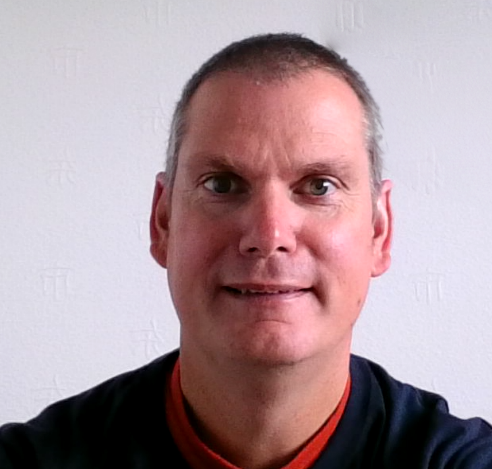 Ben Read is a cognitive behavioural therapist and occupational therapist, who works in the National Health Service in the UK. He loves science, history and philosophy, particularly evolutionary psychology and Eastern philosophy. He agrees with Jiddu Krishnamurti, that ‘meditation is one of the greatest arts in life – perhaps the greatest’.
Ben Read is a cognitive behavioural therapist and occupational therapist, who works in the National Health Service in the UK. He loves science, history and philosophy, particularly evolutionary psychology and Eastern philosophy. He agrees with Jiddu Krishnamurti, that ‘meditation is one of the greatest arts in life – perhaps the greatest’.
This is the first poem he has written and is his attempt to express his understanding of the saying’ if you don’t go within you go without’.
He has had three previous articles published in the Wise Brain Bulletin, that relate to this poem, Impermanence: a model of mental illness based on loss (2015), Making Friends with Emptiness (2016) and OCD Mind (2017).
Practical Tips for Empathetic Caregivers
© 2024 Judith Orloff
Excerpted from The Genius of Empathy: Practical Skills to Heal Your Sensitive Self, Your Relationships, and the World by Judith Orloff; Foreword by the Dalai Lama (Sounds True, April 2024.). Reprinted with permission.
Empathy is the practice of giving and caring with intention. Showing empathy for yourself or receiving it from others can make going through a health or emotional challenge easier. It takes the bite off pain and any conflict. Empathy itself is a healing act, whether you're on the giving or receiving end. It's a way of saying you matter to me.
Caregiving is an opportunity to help someone with physical, emotional, or spiritual infirmity. It is a chance for your empathy to shine. Whether you are a part- or full-time caregiver, others are dependent on you so they may feel like they are in a more vulnerable state with many needs.

I know well how being a caregiver can be a crash course on empathy, self-care, and learning to delegate. I oversaw the care of both my parents, at different times, when they became ill and eventually passed away. This sacred responsibility stretched my heart and triggered a range of emotions I didn't even know I had. Clearly, I wasn't a child anymore. Of course, I knew that intellectually. But there's something so final about sitting at a parent's sickbed and becoming the decision-maker. With poignant lucidity and sadness, my mother told me a few months before her death, "The time for supporting you and listening to your problems is over. I must channel all my energy into fighting cancer now." She and I were in an entirely new territory where our parent-child roles were reversed.
As a caregiver, sometimes you see and feel things you never wanted to see or feel — but there they are. For months, I watched my mother suffer terrible pain and anguish as she became less the "self" I was used to. My empathy for her bore right through me, her pain inflaming my pain. Exhaustion, numbness, fear of abandonment, anger at the loss, admiration, love, and devotion all rushed through me. I wondered, How much can one person feel? Many of my insecurities that had lurked beneath my competent exterior arose from the depths. My healing lesson was to have compassion for myself.
Fast forward five years. As my father's caregiver, I watched him slip into dementia and lose his mobility from Parkinson's disease. I was blessed to be at his deathbed when he passed. It was a most intimate, painful, and touching experience. Above all, what I felt was love.
In the 1990s, when both parents became ill at different points, I hadn't learned the grounding and protection skills such as shielding and centering that I now have. These could have helped me replenish myself. As an only child without relatives nearby, it was a lot for me — or for any one person. But I also learned to call on professional helpers who were a godsend. These compassionate souls sat with each parent so I could rest or see patients or walk on the beach.
I am thankful that I could bring my mother and father more peace and stability in their final days. They didn't have to be alone or without the eyes of love. I was their advocate, their rock, a familiar, caring face in the storm. My father told others, "Judith is holding me under her wing."
If you're lucky to live long enough, you may be called on to be a caregiver for an aging loved one. I can't fully prepare you for the mammoth experiences and changes you can go through, but I can say that being my parents' caregiver was one of the most important roles I've ever had. It helped me open my heart, surrender fear, and be of service to the precious and imperfect people who had raised and cherished me.

5 practical tips for caregivers
Empathy for yourself lets you be present for another. Healthy giving means sometimes stepping away from the person you are helping to meditate, sleep, attend to your own health, watch a funny movie, or talk to a friend. Also snuggle with your animal companions or stuffed animal friends to nourish your inner child who often gets lost in the caregiving process. In addition, whether you're assisting an immobile friend with a broken leg or helping a parent navigate an illness or end of life, here are five practical tips to follow.
1. Beware of smothering generosity
Sometimes you can help too much and smother people with generosity. Though you mean well, without knowing it you become intrusive, hovering, or nervously fussing over someone. You infantilize them by frequently asking, "Are you any better, honey? Are you in pain?" From the recipient's perspective, it can feel like you are treating them as a sick, helpless baby. This is not a helpful message to convey if someone is dependent on you. Of course, you don't want to minimize their suffering. But when you look at an ailing person, see their strengths and mirror everything that is most alive in them so they can see it too.
2. Appreciate the pros and cons of being a super-giver
Being a super-giver offers you a sense of purpose in that you're contributing to someone's life. Also, there are real benefits for the recipient. Super-givers have high energy. They get things done and advocate for a patient. One recovering cancer survivor told me, "A super-giver helped me through the initial phases of treatment by staying on top of every detail."
Even so, super-givers can overcompensate for their fear of abandonment or rejection by doing too much. Their subconscious motive is that by making themselves indispensable, there's less chance that the person will leave them. In reality, this isn't always true.
If you are a super-giver, enjoy your assets but honor your own well-being too. You may be energized during a crisis but crash when it's over. At those times, it's therapeutic to stare at the wall and sleep as long as necessary. Stay balanced so that you can take care of yourself and help another without becoming resentful.
3. Know the difference between worry and concern
Worry is when you focus your anxiety on a specific target such as the health of the person you are caring for. Being someone who chronically worries may be an attempt to gain control or overcome a sense of helplessness about a situation.

You also may fear that if you don't worry, you aren't being caring enough or something bad will happen — a superstitious or culturally ingrained belief. For instance, I have a friend who was raised by a Jewish mother like mine who could've been a professional worrier. Once when my partner called her to say hi she breathlessly answered the phone, "What's wrong? Are you and Judith okay?" He replied, "Nothing is wrong. Why did you think that?" She said, "You never call me." Oy vey! Worry was a daily event in both our households growing up, and it permeated our lives.
Naturally, legitimate concerns arise when someone is ill, but worry takes concern into the area of suffering. To worry is to be human. However — and I know this may be hard to absorb — worry doesn't help. If you're climbing a mountain today and worrying about all the stressful things that could happen tomorrow, it will be a very difficult climb.
So, as a caregiver, if you must worry, take a deep breath then gently exhale it into the air. Stay in the Now rather than projecting your worries into the future. Stay focused on the moment so the task at hand seems more doable. Approaching the ailing person with a relaxed attitude and unworried eyes will help them worry less and heal faster.
4. Cultivate tolerance and patience
People who are suffering from acute or chronic pain or illness or are immobile can be irritable or just in a plain mean mood. During my UCLA psychiatric residency, I learned from hospital staff veterans that the meanest patients lived longer; the nice ones more easily slipped away. I'm not condoning meanness, but it is sometimes how seriously ill patients fiercely cling to their life force.
Still, if you're caring for someone who is cranky or mean, try to understand what's going on. Particularly if the person is dying, cut them some slack and stop trying to change them. They deserve to pass over in any way they choose, even if it is difficult for us to cope with or watch.
Tolerance means being able to "live and let live" without correcting someone's beliefs or behavior. With caregiving, it may mean tolerating someone's frustrating attitude or ongoing pain. Be patient with them. The guidelines for setting healthy boundaries throughout this book will also protect your energy.
Equally important, be patient with yourself. You are in a demanding situation and may encounter daily episodes of high drama. It's okay to feel tired and short-tempered. If caregiving gets to be too much, take a short break to find your center. Remind yourself, I am an empathic person who is doing my best.
5. Reach out for support and resources
If you're helping someone who is chronically ill or terminal, it is lifesaving for you to seek help and to delegate. I understand the impulse to want to do everything yourself. After all, you are the person who knows and loves the patient the most — and you may feel uncomfortable bringing in a "stranger." Still, your healing involves learning to reach out for support.
There are many ways to do this. If you can afford a part- or full-time professional helper, utilize their services to free up space for you. Or find someone who can periodically clean the house. This will provide more peace of mind and a less chaotic environment. Support groups for caregivers are available through local churches, synagogues, or other spiritual center such as Unity Churches. Additional resources include cancer or bereavement support groups. NAMI, the National Alliance on Mental Illness, offers a helpline that connects you to services if you're caring for those with mental illness.
If you're not a "joiner" or "group person," you might feel more comfortable with online support. You can participate in Zoom or phone meetings where you can simply listen. It might not feel like second nature to reach out in this way. Still, it is essential for your mental and physical health to find others who understand what you are going through.
When caregiving ends

The time may come when it's no longer necessary for you to be a caregiver. Sometimes this transition can be a grieving process that involves releasing the trauma you witnessed. This phase is done. You must move on. But how? You may have an identity crisis and wonder, Who am I without this role? Feel all the emotions that arise, seek support when you need it, and reclaim the part of yourself that has been dedicated to supporting another. This will keep you from staying stuck in caretaker or survival mode.
For a few intense months, I gave my all to helping a relative recover from back surgery. Happily, her healing process progressed to a point where she didn't require my assistance anymore. It was natural for me to experience fatigue and also a letdown when the caregiving experience ended. But to replenish myself, I also needed to reclaim the huge amount of energy that I had directed toward her. So in meditation, I consciously asked for that energy — which was about 20 percent of my total reserves — to return to me. I told myself the truth: She is much better now and has adequate support. My job as caregiver is done. This reconnected me with my full vitality and allowed me to find closure to this period.
Typically, caregiving has a beginning and an end. As you transition into the role, have empathy for yourself. As you transition out of the role, have empathy for yourself. Never forget that this is a momentous experience. Remember to look up at the stars and the heavens to know you are never alone. There will be an invisible hand guiding you if you can allow yourself to feel it.
Meditation for caregivers
In the quiet of your home or a safe place, breathe in deeply, then exhale completely. With compassion, let yourself locate any stress that has accumulated in your body. Are your shoulders or neck tense? Is your mind blurry? Do you feel tired or irritable? It's all to be expected. Have empathy for every ache or pain, for every flash of anxiety, worry, depression, or exhaustion you feel. Breathe love into each one. Be patient with yourself. You are being of service to another, a glorious act of empathy. Reconnect with your own energy and spirit. You are growing. You are giving. You are evolving your heart. Feel the poignancy and power of this opportunity.
ABOUT THE AUTHOR
 Judith Orloff, MD, is author of the new book, The Genius of Empathy: Practical Skills to Heal Your Sensitive Self, Your Relationships, and the World with Foreword by the Dalai Lama (Sounds True, April 9, 2024). Dr. Orloff is a member of the UCLA Psychiatric Clinical Faculty and a New York Times bestselling author. She's a leading voice in the fields of medicine, psychiatry, empathy, and intuitive development. Her work has been featured on CNN, NPR, Talks at Google, TEDx, and the American Psychiatric Association. She has also appeared in USA Today; O, The Oprah Magazine; Scientific American; and The New England Journal of Medicine. She specializes in treating highly sensitive people in her private practice. Learn more at drjudithorloff.com.
Judith Orloff, MD, is author of the new book, The Genius of Empathy: Practical Skills to Heal Your Sensitive Self, Your Relationships, and the World with Foreword by the Dalai Lama (Sounds True, April 9, 2024). Dr. Orloff is a member of the UCLA Psychiatric Clinical Faculty and a New York Times bestselling author. She's a leading voice in the fields of medicine, psychiatry, empathy, and intuitive development. Her work has been featured on CNN, NPR, Talks at Google, TEDx, and the American Psychiatric Association. She has also appeared in USA Today; O, The Oprah Magazine; Scientific American; and The New England Journal of Medicine. She specializes in treating highly sensitive people in her private practice. Learn more at drjudithorloff.com.
Maximize Your Joy: How Greenlighting Can Widen and Deepen Your Green Zone
© 2024 Saniel Bonder and Linda Groves-Bonder
The Two Kinds of Joy, and Why It’s Totally OK for You to Maximize Both
We’re all familiar with joy that comes through something we experience, outwardly or within. Whatever the cause, that delight is temporary and experiential. It happens to us. An ice cream cone, a friendly smile, a loved one’s hug, a sunny morning, a career success, an emotional insight, helping someone in need, a spiritual epiphany — the causes of temporary and conditional joys are innumerable.
But no matter how hard we try to hold onto them, these experiential joys eventually dissipate. They come and go. That doesn’t mean they aren’t important for well-being.
Once it’s well accessed, we eventually realize that the other kind of joy is unshakable, un-lose able. It’s not caused by experiences. Even if a specific event triggers our awareness of it, this joy isn’t happening to us.

We sense that this joy is innate, existential, the unconditional foundation of our sense of being. It doesn’t come and go. It’s always present. We’re not having an experience of it. We’re being it. Sometimes it shines strongly. Sometimes it’s more in the background. But it’s always there — here. It can’t be eradicated or lost.
For some this joy of being is associated with religious faith or spiritual awareness, an anchor at the root of their souls. For others, it’s secular, but not less sublime.
Some traditional and contemporary approaches warn us to strictly limit, avoid, or transcend temporary, especially material pleasures and joys, so we can find and abide in permanent spiritual wisdom and joy.
We say “it’s totally OK for you to maximize both” — provided you understand the difference and can discern what kind of joy to cultivate, when, how, and with whom.
To get a heart-and-guts take on this, here’s that story about two modern spiritual heroes:
How the Dalai Lama and Archbishop Tutu Apparently Disagreed: “Mental Immunity” vs. “Self-Acceptance and Self-Forgiveness”
In 2015 His Holiness the 14th Dalai Lama and Archbishop Emeritus Desmond Tutu of South Africa met for a week in Dharamsala, India, to celebrate the Dalai Lama’s 80th birthday.
Amid the festivities, they recorded extensive conversations on joy, as a gift to the world.
The Archbishop’s assistant, American author and publisher Douglas Abrams, oversaw the recording sessions. He later had the dialogues transcribed, then interwove them with his narration in The Book of Joy: Lasting Happiness in a Changing World (2016). A bestseller, it led to a popular Netflix documentary, Mission: Joy, featuring original video footage.
In the book the two longtime friends discussed “obstacles to joy” and how to deal with them. In a disarmingly gentle way, they appeared to disagree.
Abrams wrote:
For months [afterward] I wrestled with this seeming disagreement: Is it possible to truly prevent negative thoughts and emotions, to develop what the Dalai Lama was calling “mental immunity”? Or are these thoughts and emotions inevitable, and should we, as the Archbishop was suggesting, just accept them and forgive ourselves for having them?
Finally, after many discussions with psychological experts, it became clear that each position was valid and simply reflected a different stage in the cycle of emotional life. (Pp. 85-86)
This “seeming disagreement” highlights the often less friendly “either/or” argument about these matters that pervades human culture.
In our Human Sun HEART Work, we have always advocated a “both/and, each in its own time” approach, consistent with Douglas Abrams’s.
The catch for many people is knowing:
-
when to go in which direction, and
-
how to do that without either dissociative “spiritual bypassing” of negativity and pain, or emotional wallowing in them.

Like many other thought leaders today, Rick Hanson offers a refined, “both/and” perspective on these matters. His approach is informed by his expertise in neuropsychological and evolutionary brain science and his dedicated Buddhist practice.
An example is his HEAL acronym in Hardwiring Happiness — “Have a positive experience, Enrich it, Absorb it, and (this one’s optional), Link it to a corresponding negative experience.” Another is his formula in Neurodharma , “Let it be, let it go, let it in.”
Rick’s discerning all-inclusiveness prompts him to suggest ways of honoring multiple perspectives and possible choices in our daily lives. He also helps us choose when and how to give each approach its moments at our inner and relational podium.
What We Mean by “Greenlighting”
In the early months of his work, Saniel began using the term “greenlighting” in personal counseling sessions. Most of his clients were longtime and frustrated spiritual seekers.
Over those months, to their great joy, several realized stable embodied awakenings. Many benefited in other ways.
However, a glitch came up. Well into the one-on-one meetings, Saniel would suggest a deep self acceptance of all our everyday human “stuff,” the dark and light, negative and positive. He writes:
I had spontaneously adopted this acceptance practice in my own journey. It was so liberating!
So, when I recommended it, I expected people would feel relieved and empowered by trying it.
Instead, for some, it was as if their eyes glazed over. They became uncomfortable. Afterward it was hard to regain our energetic connection.
At first I was mystified.
Eventually I saw that when I said ‘acceptance,’ some heard ‘resignation’ — meaning, they should just accept things in themselves that they really didn’t like.
I needed another word.
I’d heard of the term ‘greenlighting’ as a crucial stage in filmmaking, when producers give a film their official go-ahead. That greenlighting sets a creative transformation in motion.
So I began using ‘greenlighting’ to mean an empowering self-acceptance that, for some of us, had meant almost the exact opposite of passively resigning yourself to never changing.”
It worked. Over the years greenlighting became popular in our growing Waking Down community. The more practitioners learned to be with and so greenlight parts of themselves they had previously reacted to and struggled against, the more freedom they discovered in how to relate to those parts. What a paradox!
Wise greenlighting gradually shifts how you deal with both negative tendencies and positive challenges in your body-mind and life.
Instead of our having to master, overcome, or transform stubborn patterns by willful effort, greenlighting disarms their power over us. It enables us to move with ease and effectiveness into both active and passive modes of thinking, speaking, and participating.
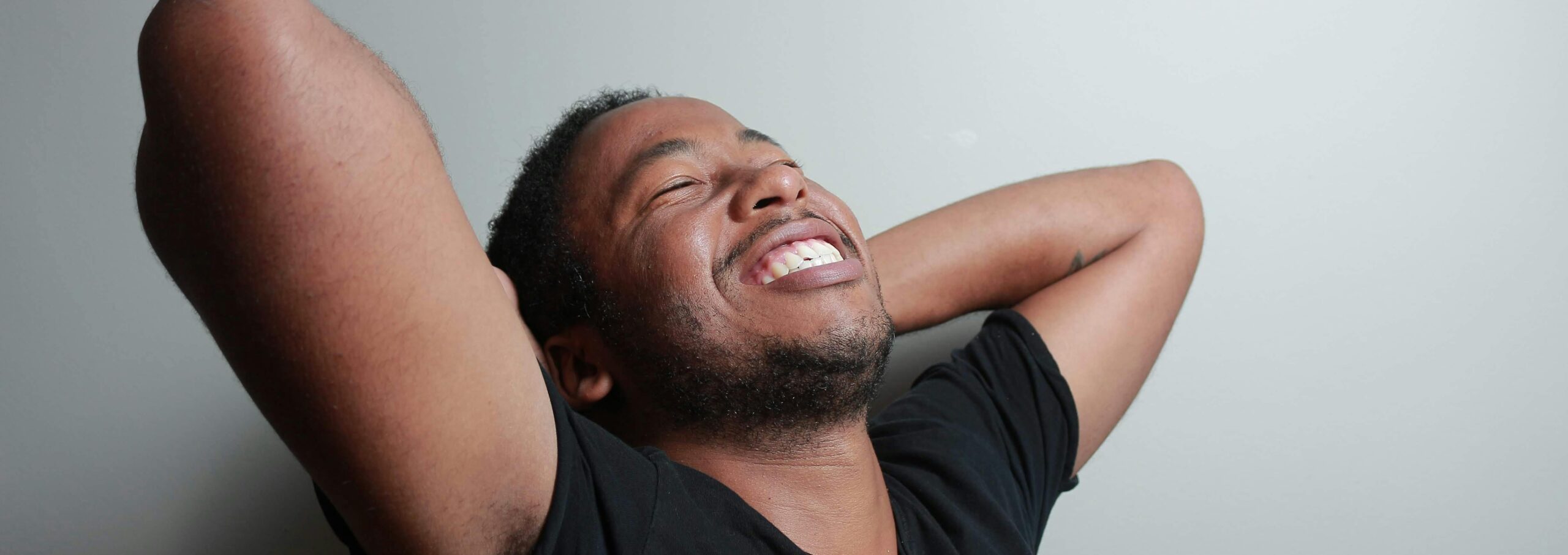
How Greenlighting Can Amplify Our “Green Zones” of Safety, Satisfaction, and Connection
Greenlighting can strengthen a crucial neuropsychological condition: the “green zone” of our brains and minds.
In Hardwiring Happiness: The New Brain Science of Contentment, Calm, and Confidence, Rick Hanson fleshes out the concept of the peaceful, contented “Green Brain” and “Green Zone.”
As the brain evolved, so did its capabilities to meet our three core needs — safety, satisfaction , and connection — through, respectively, three “operating systems” that avoid harms, approach rewards, and attach to others…
Each of your brain’s operating systems has essentially two settings: responsive and reactive. As long as you experience that the core need a system handles is basically being met, then that system defaults to its responsive setting. When you feel safe, your avoiding harms system enters its responsive mode, which brings feelings of relaxation, calm, and peace. When you feel satisfied, your approaching rewards system enters its responsive setting, with feelings such as gratitude, gladness, accomplishment, and contentment. And when you feel connected, your attaching to others system goes responsive, evoking feelings of belonging, intimacy, compassion, kindness, worth, and love. For simplicity, I think of this as the “green” setting of your brain.
In the responsive mode, you meet challenges without them becoming stressors. Events occur, even hard ones, but there’s a kind of shock absorber in your brain that stops them from rattling you. You deal with threat, loss, or rejection without getting carried along by feelings of fear, frustration, or heartache. You’re still engaged with life, and sometimes handling very difficult things, but on the basis of an underlying sense of security, fulfillment, and feeling cared about…
When your mind is in the green zone, your neural networks are no longer in a state of deficit or disturbance…
The green brain is contagious. When you come from a responsive place, it helps draw others there as well. (Pp. 34, 38, and 41)
You can use greenlighting on its own or to complement and synergize with all kinds of other good ways of staying in the green zone — for example, practicing mindfulness.
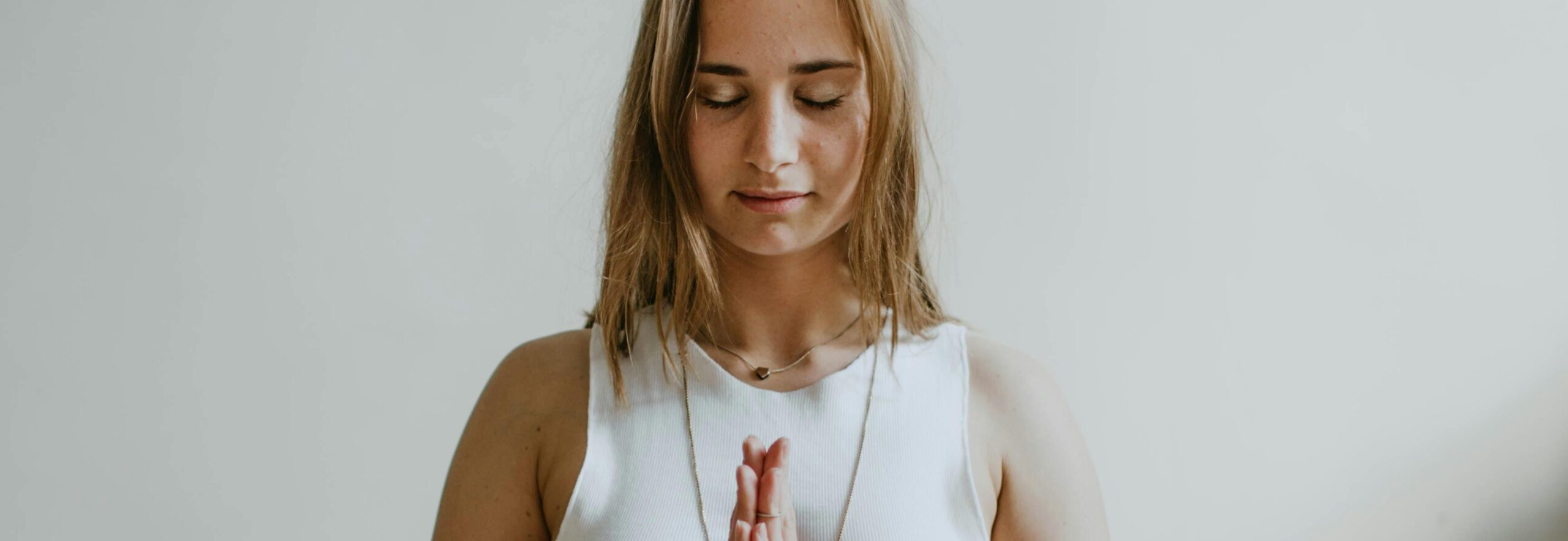
Six-Step Recognition Yoga™: See it, Feel it, Live it, Be it, Transcend it, Speak it — Greenlighting in Its "Feminine" Mode
One form of greenlighting, analogous to the Dalai Lama’s cultivation of mental immunity, is the more “masculine”1 mode. It involves active, willed efforts to master and transcend negative thoughts and emotions.
The other form, more feminine, is analogous to Archbishop Tutu’s self-acceptance and self forgiveness. It’s about being with and accepting negative reactions and patterns rather than trying to permanently be free of them.
Six-Step Recognition Yoga is our work’s main practice of greenlighting in its feminine form. There’s a mysterious story of how Six-Step Recognition Yoga was revealed to Linda2:
Many years ago I was dealing with a particular issue in my life, a relationship that had gotten extremely difficult (not with Saniel, thankfully). I was feeling controlled by it, and I was upset that I wasn’t able to get more relaxation, clarity, and centering around how it was playing out.
One day I felt very tired. In the afternoon I laid down and took a nap. As I woke up, in that between awake-and-sleeping place I had a reverie. It wasn’t a dream.
I was contemplating that issue I had been dealing with, and all of a sudden it was as if billboards showed up in my mind’s eye. The words ‘See it, Feel it, Live it, Be it, Transcend it’ just spontaneously appeared.
I sat straight up in bed. In a split second I knew what all of that meant in regard to the issue I was dealing with. Something about those words in that order resonated in my whole being. I felt, ‘Oh my gosh, that’s it!’
Now, you’re probably thinking, ‘Well, that’s only five steps.’ Here’s what happened next.
1. In this era of sensitive attention to gender issues, using the terms “masculine” and “feminine” as we do here has serious drawbacks. Even so, for many the terms remain relevant and meaningful. And other terms, such as “yin,” “passive,” or “receptive” instead of “feminine,” and “yang,” “agentic,” or “penetrating” instead of “mascu line,” have their own limitations. We’re aware of many of these issues yet feel, all things considered, that for a majority of readers it’s likely to be more helpful than not to go ahead and use those words.
2. This story is excerpted and adapted from Linda’s introduction to an audio recording of a guided meditation on Six-Step Recognition Yoga.
As I was feeling into this, I jumped out of bed and went into the kitchen to tell Saniel about it. He was working at a little table there. I was so excited. Within an instant of this reverie showing itself, I had a sense of relief and groundedness, even though the issue was still present in my life.
Saniel was blown away, both by my experience and the simple wording of what came through.
He then asked, ‘Can I add another piece to it?’
I said, ‘Absolutely!’
He said, ‘Speak it — at appropriate moments along the way.’
That resonated with me profoundly, especially since speaking about it was also part of living it. This completed the process of recognition that I was dealing with.
In summary, the sequence of what we call Six-Step Recognition Yoga is:
See It · Feel It · Live It · Be It · Transcend It · Speak It

“Yoga,” from a root word in Sanskrit meaning “to yoke or unite,” applies to many different practices, not just the physical poses and moves of ‘Hatha Yoga’ now popular worldwide. Some of those other yogas don’t include bodily attitudes or exercises.
Over time Linda added clarifying phrases and commentary to this simply worded six-step list. She includes them in this brief guided practice of Six-Step Recognition Yoga:
When you contemplate what issue to investigate in this process, it might be good to choose one that’s difficult for you, though not re-traumatizing. You may feel like it’s got a kind of chokehold on you. Almost like when you’re really in it, it’s hard to breathe.
The first step, ‘seeing it,’ is identifying what the issue is. So let’s just pause for a second and identify something that you may want to consider…
If you’ve accessed something you would like to bring into more clarity and discernment in your being, that’s seeing it.
The second step, ‘feeling it,’ is allowing yourself to open up not just the visceral feeling sense in the body but the emotional component of what the issue tends to communicate to you.
For instance, if you’re feeling sad sometimes tears arise. When that happens, your body is speaking to you in that way. Seeing it and feeling it are bringing it down into the body and also into awareness of your emotional being.
So you’re feeling this issue or difficult matter. What does it feel like?
You may be accessing it somewhere in the body, and that’s a good thing. If not, that’s okay too. You might drop further down into a bodily awareness of it in the next, third step, ‘living it.’ So far, you’re seeing it and feeling it.
Now the yoga goes into that deeper sense of living it. What I mean by that is being able to bring it into action, expression. If it’s an issue with another person, living it could perhaps involve going to that person and having a conversation so that healing can start. (Which would also include the sixth step, ‘speaking it’ at an appropriate time.)
Or if it’s something that you just feel is bottled up physically in your body, and you need to go somewhere and scream or shout, dance it out, that’s a form of living it. It’s okay to feel those emotions and to actively express them, in these or other ways.
With living it, you drop deeper into understanding what the issue is.
With the next phase, step four, ‘being it,’ you start to become the issue. You’re not pushing it away, trying to get away from it, avoid it, put it to the side, or thinking, ‘I’ll deal with it later.’
You’re bringing it into ‘being it.’ It becomes you fully in your whole being.
The living and being go hand in hand, they’re closely linked. As you’re living and being it, you start to feel like you’re able to relax a little about it. Your attitude about the issue starts to shift. This attitude change is really important.
You’re not feeling, ‘Oh my gosh, this is a horrible thing and I just can’t do anything with it.’
You actually are embodying it. And when you ‘be it,’ when you embody it, there is a miraculous opening sometimes where the effect of the issue changes and shifts.
That’s what I mean by transcending it in place, the fifth step. The ‘in place’ part is, the issue is still there. You still have to consider it sometimes, and naturally recognition comes in to strengthen a different relationship to it.
The sense of it having a chokehold on you is released, and you can breathe easier. So transcending it is not about going into an altered state. It’s about being released from the previous effect it used to have on you.
The sixth step is speaking it along the way at appropriate moments and that also goes back to the living and being of it. It makes use of the healing power of connection, of mutuality with others. Often that will be someone who can really see you, that you can entrust these vulnerable feelings to.
After learning and initially adapting to it, for many people this yoga becomes second nature. When something comes up that triggers them, they instinctively go right into it, without having to think about the different steps. We’ve seen this many times in practitioners we’ve coached, past and present.
Hopefully this has given you a feeling for how each step and all of them taken together are a daring, profoundly feminine form of greenlighting.

The Four R’s: Recognition, Release, Reconfiguration, and Regeneration — Greenlighting in Its “Masculine” Mode
We’ve taught Six-Step Recognition Yoga to thousands of people. Most have found it helpful and some, quite liberating.
Over time, however, we noticed that some people tend to get stuck in the “live it” and “be it” steps around painful issues and patterns.
Using Rick Hanson’s terms, the “Velcro”-like “negativity bias” of our brains, minds, and hearts can always crop up and hijack our best intentions, preventing us from getting to the “Teflon” of “transcend it.”
That bias can also distort our “speak it” step. Instead of greenlighting one another, we can indulge one another’s self-negativity.
Eventually Saniel gave names to how seasoned practitioners generally avoid those traps. (It’s not like anybody’s perfect at this stuff!)
This next-phase process is called “The Four R’s” — recognition, release, reconfiguration, and regeneration.
Implementing the Four R’s moves beyond passive “self-acceptance and self-forgiveness” — as favored by Archbishop Tutu. Instead, it cultivates something like the Dalai Lama’s “mental immunity.”
Combining Six-Step Recognition Yoga and the Four R’s can become a reliable “both/and” orientation. Especially with a persisting challenge, negative or positive, it helps you find a just-right time to switch gears from tolerant self-nurturing to transcendent self-challenging.
This empowers you all the more to maximize both kinds of joy. Saniel writes:
From fall 1992 into summer 1994, I participated in group journeys guided by a Peruvian trained American shaman, an ayahuasquero. In December 1992, I passed through the non-dual embodied awakening that led to my work.3 (The psychoactive medicine journeying aided that shift but wasn’t its primary source.)

At times afterward I experienced intense doubt about the awakening itself. It seemed so different from most traditional descriptions. Every time, transcendence in place, the release from the chokehold, arose of its own accord. It was uncanny. I wouldn’t have thought that a grounded, non-‘altered state’ transcendence could come from identifying with and being the doubt without any buffer. But it did, every time. Truly a joyful, though temporary, liberation!
During a journey in May 1994, that doubt came up intensely. I went to our group’s shaman-guide and filled him in. Familiar with my patterns, he said of my doubting, ‘Well…you’re a professional.’ Then he shrugged. His point: ‘We’ve been around this doubt block before. You’re on your own. Deal with it yourself — or don’t.’ He had nothing else to offer.
3. In some spiritual paths it’s considered inappropriate and immature to claim an awakening. We respect that orientation. However, after our kind of whole-being, relational embodiment of Spirit is confidently established, many practitioners feel it’s bodily grounding and empowering to “speak it at appropriate moments.”
I went back to my cushion, near a longtime woman friend. A distinguished business leader and experienced spiritual practitioner, she knew I sometimes struggled with this issue.
As an early coaching client, she also regularly relied on my counsel and transmission.
I told her about my interchange with our shaman.
She pointedly asked, ‘Do you think you can burn the bridge back to that playground?
Not the response I was expecting! I said, ‘Yeah — I think I can. But why do you ask?’
‘Because every time you go there, I get cut adrift.’
Her words seared me. I said, ‘Well, in that case, I won’t just burn the bridge. I’ll burn the playground too.’
Somehow, right then and for keeps, I did just that.
I had been living this embodied awakeness continuously for a year and a half — paradoxically, even when doubt of it temporarily possessed my mind.
Afterward the doubt didn’t immediately disappear. But whenever it came up again, instead of ‘living it’ and ‘being it,’ I went straight into ‘transcending it.’
Until that incident, that choice wasn’t possible. I was always learning something new and being deepened or strengthened by allowing the doubt to seemingly consume me, until its chokehold released.
This time, spurred by both my shaman’s and my client-friend’s challenges, I realized I had nothing more to learn from living and being the doubt — and good personal and relational reasons not to, ever again.
Instead, I chose the recognition and immediately subsequent release (the first two R’s) that my previous dances with that doubt had always led to. Afterward, whenever it arose, I reconfigured (the third R) my way of responding to it.
Over time, it became natural to enact that new response. This was in line with empirically well confirmed ways to establish new ‘neural grooves’ for replacing an old habit with a new one. That repeated reconfiguration then triggered a regeneration (the fourth R), a whole new habit.
Unused and un-reacted to, soon that previously governing self-doubt did disappear. In effect, I’d practiced and mastered mental immunity to it. That ultimately led my ‘transcend it’ response to become second nature without having ‘lived and been it.’
It had become urgent for me replace my feminine modes of greenlighting that doubt with masculine ones.
If you explore these practices, it’s important not to rush into reconfiguration. If you’ve worked hard to develop and trust your will and capacity for self-change, that may be a temptation. Why not use your hard-won strength?
You’ll have to find out for yourself. We’re just saying, it’s entirely to your advantage to continue accepting and surrendering into any challenging issue until you get a very strong sense of “been here, done this, not learning anything new” every time you opt to “live it” and “be it.”

How do the “two kinds of joy” figure in here? As Saniel suggested, the temporary recognition release of each “transcend it” moment is a conditional, experiential joy. Even so, while daring to “live it” and “be it” can seem insane to disciplined self-changers, it sources our innate, unconditional, existential joy of being. As does the capacity later to reconfigure and regenerate our response to any of those “its” that have challenged us.

In Closing, with a Note on the HEART
In this article, we’ve presented Six-Step Recognition Yoga and the Four R’s as practices anyone can learn and apply. Our goal is to provide you practical information you can use in your own life and share with kindred-spirit friends, wherever you are on your own journey of growth and transformation.
As Linda often emphasizes, the whole process that emerges when you use these resources is “not cookie-cutter.” It’s not a one-size-fits-all system that everyone superimposes on themselves and tries to conform to.
Rather, we encourage you to take experimental responsibility for your own unfoldment and contribution, seeking help as needed.
Everything we’ve offered you in this article is an expression of what we call HEART-Activation. Spelling HEART that way points to the greater reality of being and becoming that we all share; it’s a body-positive term for the ultimate Mystery of existence. Over the last several decades we’ve been blessed to develop a whole body of work on its foundation. You can learn more about that work from the information in our bios below.
We wish you blessings on your journey, wherever it may lead!
ABOUT THE AUTHOR
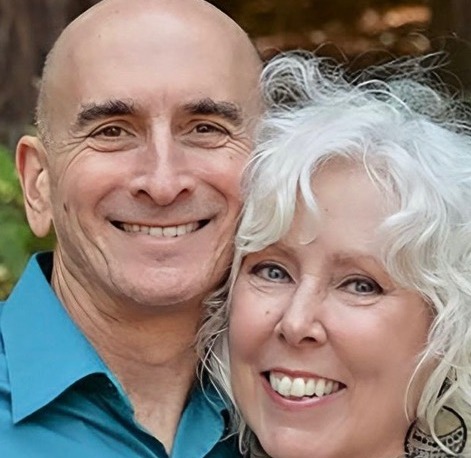 Saniel Bonder and Linda Groves-Bonder are pioneering coaches and improvisational artists of embodied awakening through their Human Sun HEART Work, which is best known by its flagship training, Waking Down in Mutuality®. Their main message to everyone is, “The Sun in your Heart is rising.”
Saniel Bonder and Linda Groves-Bonder are pioneering coaches and improvisational artists of embodied awakening through their Human Sun HEART Work, which is best known by its flagship training, Waking Down in Mutuality®. Their main message to everyone is, “The Sun in your Heart is rising.”
Saniel was an Honorary National Scholar at Harvard, earning a B.A. in Social Relations. Since completing his spiritual quest, he has spent 30+ years “democratizing” grounded, relational enlightenment, with Linda’s full partnership. He has authored many spiritual books, including Waking Down, Healing the Spirit/Matter Split, and Great Relief , and two novels.
Linda graduated from Ball State University with a B.S. in Art Education. A singer-songwriter, photostylist, and artist, she has toured with an international band and released two solo albums, I’m Here, an EP of jazz standards and her original songs, and Joy of Being, her wordless vocal toning. Since 1996 she has focused on teaching Waking Down® with Saniel.
Saniel and Linda’s primary vehicle of public outreach is their evergreen online course, Maximizing Joy: In Your Life, Work, Relationships — and World. Its sample-session mini-course is Laying a Foundation for Maximizing Your Joy, which features a wonderful guest interview with Rick Hanson. You can find a longer version of Linda’s guided meditation on Six-Step Recognition Yoga in the Guided Meditations Collection at https://www.sanielandlinda.com/store.
Saniel and Linda were founding members of Ken Wilber’s Integral Institute and charter members of his Integral Spiritual Center. They are frequent featured guests on podcasts and summits. They live in the ranch house on a working equine therapy center in the countryside near Sonoma, California, surrounded by the pastures and vineyards of the wine country.
Fare Well
May you and all beings be happy, loving, and wise
Perspectives on Self-Care
Be careful with all self-help methods (including those presented in this Bulletin), which are no substitute for working with a licensed healthcare practitioner. People vary, and what works for someone else may not be a good fit for you. When you try something, start slowly and carefully, and stop immediately if it feels bad or makes things worse.
The Wellspring Institute
For Neuroscience and Contemplative Wisdom
The Institute is a 501c3 non-profit corporation, and it publishes the Wise Brain Bulletin. The Wellspring Institute gathers, organizes, and freely offers information and methods – supported by brain science and the contemplative disciplines – for greater happiness, love, effectiveness, and wisdom. For more information about the Institute, please go to https://www.wisebrain.org/wellspring-institute.
If you enjoy receiving the Wise Brain Bulletin, please consider making a tax-deductible donation to the Wellspring Institute. Simply visit WiseBrain.org and click on the Donate button. We thank you.

